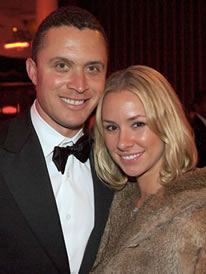What defines a legacy? Is it the impact one leaves on their immediate circle or the broader influence they exert on society? Ronald E. Ford's life exemplifies both, embodying values of devotion, hard work, and community spirit that resonate deeply with many. His journey from being an outstanding athlete to becoming a cherished family man reflects the essence of perseverance and commitment.
Ronald E. Ford of Lancaster passed away peacefully surrounded by his loving family and his wife of 59 years, Mary Ann, on November 21, 2024. Born on April 19, 1940, he was the second child among ten siblings to the late James W. Ford and Viola Ewell Ford. The Fords were renowned for their quiet demeanor and deep faith, instilling in their children a profound commitment to church, education, diligence, and community service. Ron's father, who served as a veteran, played a pivotal role in shaping his character, sending him and his brother Kenneth to the Scotland School for Veterans’ Children. An exceptional athlete during his youth, Ron excelled as a sprinter at Morgan State University before returning to Lancaster to build a fulfilling life alongside Mary Ann. Together, they nurtured two children while maintaining close ties with seven grandchildren who brought them immense joy through great and great-great grandchildren.
| Bio Data & Personal Information | Career & Professional Information |
|---|---|
| Full Name: Ronald E. Ford | Education: Morgan State University (Track Team) |
| Date of Birth: April 19, 1940 | Profession: Family Man / Community Advocate |
| Place of Birth: Lancaster, PA | Notable Achievements: Outstanding Athlete; Devoted Family Man |
| Parents: James W. Ford & Viola Ewell Ford | Community Involvement: Active member of local churches and educational initiatives |
| Spouse: Mary Ann Ford | Reference Website |
The narrative of Ronald E. Ford is not merely about individual accomplishments but also about the ripple effect of his actions within his community. Growing up in a household where faith and education were paramount, Ron learned early on the importance of contributing positively to society. This ethos guided him throughout his life, whether as an athlete showcasing excellence or as a family man fostering unity among relatives spanning multiple generations. His decision to return to Lancaster after initial stints in Baltimore underscored his loyalty to roots—a trait often admired yet increasingly rare today.
In parallel contexts, Dorothy Bowles Ford emerges as another significant figure whose life intertwined closely with prominent political circles. Her marriage to Harold Ford Sr. marked the beginning of her public association with the illustrious Ford family dynasty. Beyond this union, however, she carved out her identity independently, engaging actively in various capacities that contributed significantly to civic life. Like Ronald E. Ford, Dorothy too emphasized familial bonds while extending her reach into realms beyond domesticity. Such parallels highlight how personal convictions can shape destinies irrespective of external circumstances.
Another dimension of legacy-building comes alive when examining figures like Alvin Ailey, celebrated globally for revolutionizing modern dance forms. Edges of Ailey, currently showcased at New York City's Whitney Museum of American Art, offers an expansive exploration of Ailey’s creative endeavors and lasting impact. By juxtaposing visual arts, live performances, music, and archival records, the exhibition encapsulates Ailey’s multifaceted contributions—both personally transformative and culturally resonant. It serves as a reminder that legacies transcend mere lifetimes, leaving indelible marks across generations.
On a different note, consider the case of Harold Eugene Gerbis III, whose obituary mentions surviving family members including his mother Jennifer Ford Gerbis and father Harold Eugene Gerbis Jr. Instances such as these reflect universal themes surrounding mortality and continuity. Each life lost leaves behind memories cherished by those left behind, underscoring the cyclical nature of existence where every end paves way for new beginnings.
Meanwhile, Ohio's historic family farms offer yet another lens through which to view enduring legacies. With over 2,000 registered properties spread statewide, these establishments represent more than just agricultural enterprises; they symbolize resilience against time and change. Families managing such operations pass down traditions generation after generation, preserving cultural heritage amidst evolving landscapes. Their stories echo similar sentiments expressed earlier regarding dedication and stewardship—qualities central to sustaining meaningful connections between past, present, and future.
Returning to our focal subject, Ronald E. Ford's story epitomizes core principles cherished universally: love, integrity, responsibility, and purposeful living. Through consistent demonstration of these traits, he ensured his memory would endure long after physical presence ceased. Whether participating in athletic competitions or nurturing relationships within extended kin networks, Ron consistently acted according to higher ideals. Such consistency speaks volumes about character formation influenced early by parental guidance coupled with personal resolve.
As we delve deeper into understanding what constitutes lasting legacies, recurring motifs emerge—family centrality, communal engagement, artistic innovation, historical preservation—all interwoven threads forming rich tapestries representing human experience collectively. These elements collectively reinforce the notion that true greatness lies not necessarily in grand gestures alone but equally so in quiet acts performed daily with sincerity and intentionality.
Ultimately, each person contributes uniquely towards weaving societal fabrics based upon shared values upheld steadfastly despite challenges faced along the way. For individuals like Ronald E. Ford, Dorothy Bowles Ford, Alvin Ailey, Harold Eugene Gerbis III, and countless others unnamed here, their collective efforts remind us all why cherishing legacies matters profoundly—not only honoring those gone before but inspiring current and future cohorts alike.



